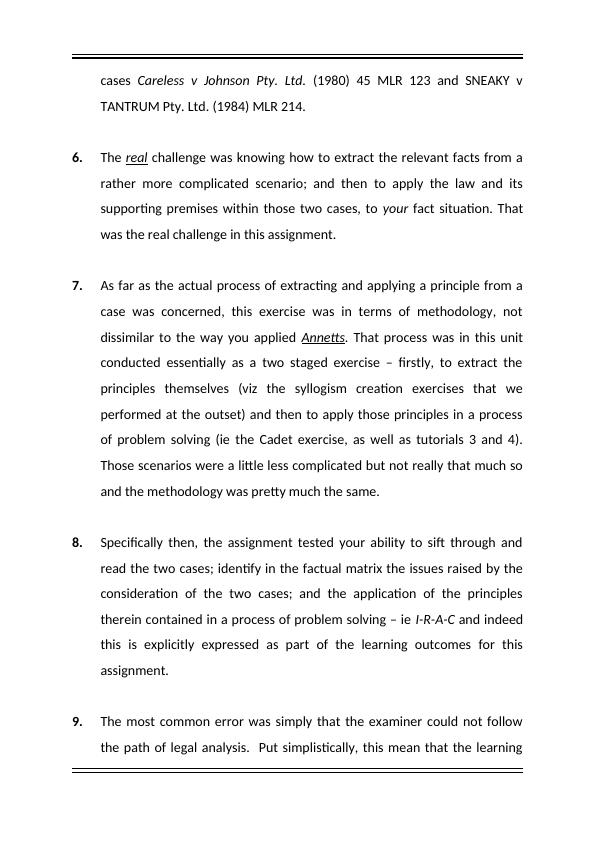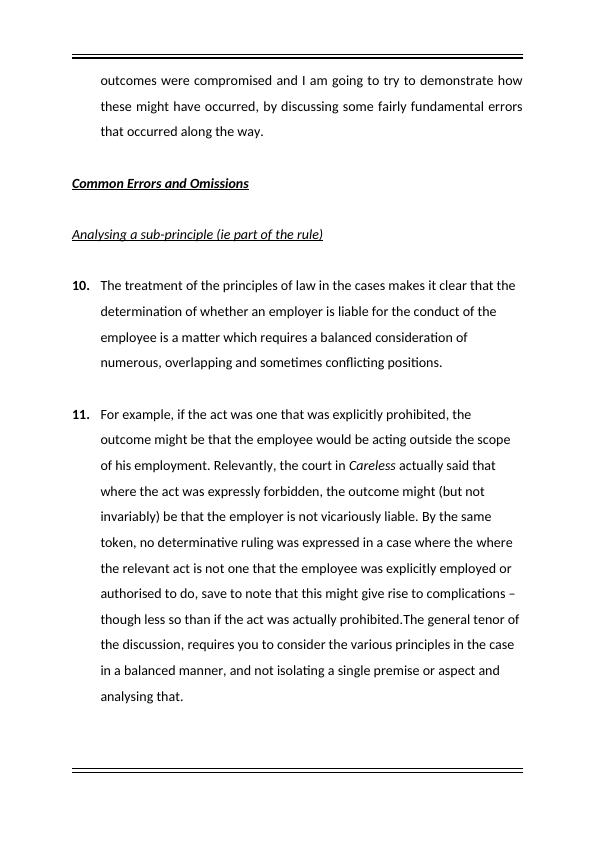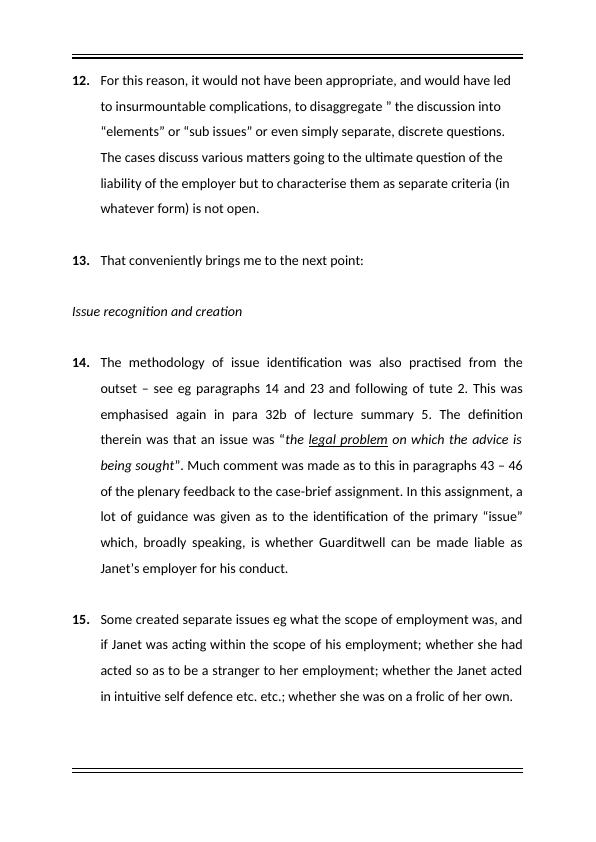Ask a question from expert
Legal Problem Solving: Assignment
18 Pages4490 Words343 Views
Added on 2019-10-18
Legal Problem Solving: Assignment
Added on 2019-10-18
BookmarkShareRelated Documents
LEGAL PROCESS 2016 Semester 2MAJOR ASSIGNMENT – PLENARY FEEDBACKIRAC Generally1.Without repeating the formal learning outcomes, essentially this exerciseis an exercise in legal problem solving (ie IRAC). 2.The exercise is intended to test your legal problem skills. Although theexercise is explicitly to be based on I-R-A-C, I-R-A-C itself is nothing morethan a legal syllogism and the mastery of this mind set takes us all the wayback to paragraph 86 of lecture summary 1.3.The exercise was intended to test your legal problem solving skills – andhere, relevantly, that the legal material upon which the exercise wasbased was strictly to be limited to the Research Material (hence my veryexplicit instructions).4.The actual legal correctness or content was simply not to the point, norwere the conclusions. I was interested only in your answers for theirstructure and the extent to which they displayed an understanding ofgeneric legal problem solving.5.The facts themselves in those two cases, and the legal propositions to thelimited extent necessary for this assignment, are contained in two rathershort extracts specifically provided namely the extracts from two fictional

cases Careless v Johnson Pty. Ltd. (1980) 45 MLR 123 and SNEAKY vTANTRUM Pty. Ltd.(1984) MLR 214.6.The real challenge was knowing how to extract the relevant facts from arather more complicated scenario; and then to apply the law and itssupporting premises within those two cases, to yourfact situation. Thatwas the real challenge in this assignment. 7.As far as the actual process of extracting and applying a principle from acase was concerned, this exercise was in terms of methodology, notdissimilar to the way you applied Annetts. That process was in this unitconducted essentially as a two staged exercise – firstly, to extract theprinciples themselves (viz the syllogism creation exercises that weperformed at the outset) and then to apply those principles in a processof problem solving (iethe Cadet exercise, as well as tutorials 3 and 4).Those scenarios were a little less complicated but not really that much soand the methodology was pretty much the same.8.Specifically then, the assignment tested your ability to sift through andread the two cases; identify in the factual matrix the issues raised by theconsideration of the two cases; and the application of the principlestherein contained in a process of problem solving – ie I-R-A-C and indeedthis is explicitly expressed as part of the learning outcomes for thisassignment.9.The most common error was simply that the examiner could not followthe path of legal analysis. Put simplistically, this mean that the learning

outcomes were compromised and I am going to try to demonstrate howthese might have occurred, by discussing some fairly fundamental errorsthat occurred along the way.Common Errors and OmissionsAnalysing a sub-principle (ie part of the rule)10.The treatment of the principles of law in the cases makes it clear that the determination of whether an employer is liable for the conduct of the employee is a matter which requires a balanced consideration of numerous, overlapping and sometimes conflicting positions. 11.For example, if the act was one that was explicitly prohibited, the outcome might be that the employee would be acting outside the scope of his employment. Relevantly, the court in Careless actually said that where the act was expressly forbidden, the outcome might (but not invariably) be that the employer is not vicariously liable. By the same token, no determinative ruling was expressed in a case where the where the relevant act is not one that the employee was explicitly employed or authorised to do, save to note that this might give rise to complications – though less so than if the act was actually prohibited.The general tenor of the discussion, requires you to consider the various principles in the case in a balanced manner, and not isolating a single premise or aspect and analysing that.

12.For this reason, it would not have been appropriate, and would have led to insurmountable complications, to disaggregate ” the discussion into “elements” or “sub issues” or even simply separate, discrete questions. The cases discuss various matters going to the ultimate question of the liability of the employer but to characterise them as separate criteria (in whatever form) is not open. 13.That conveniently brings me to the next point:Issue recognition and creation14.The methodology of issue identification was also practised from theoutset – see eg paragraphs 14 and 23 and following of tute 2. This wasemphasised again in para 32b of lecture summary 5. The definitiontherein was that an issue was “the legal problem on which the advice isbeing sought”. Much comment was made as to this in paragraphs 43 – 46of the plenary feedback to the case-brief assignment. In this assignment, alot of guidance was given as to the identification of the primary “issue”which, broadly speaking, is whether Guarditwell can be made liable asJanet’s employer for his conduct.15.Some created separate issues eg what the scope of employment was, andif Janet was acting within the scope of his employment; whether she hadacted so as to be a stranger to her employment; whether the Janet actedin intuitive self defence etc. etc.; whether she was on a frolic of her own.

End of preview
Want to access all the pages? Upload your documents or become a member.